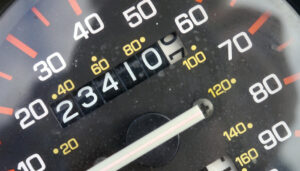In most manuals, you won’t find the recommended interval for performing a coolant flush on your vehicle. Mechanics vary in opinion when it comes to deciding the ideal schedule for performing this car maintenance routine. When you bring your vehicle to different car repair shops, you will find that they have different advice on the proper radiator flush interval. The truth is, the schedule depends on how proactive you want to be in maintaining your vehicle in good condition. After all, a coolant flush is a crucial part of a car radiator maintenance routine.
What is an Engine Coolant?
Also referred to as anti-freeze, an engine coolant is a heat transfer fluid designed to keep your engine cool. It comprises a combination of propylene glycol or ethylene and water, typically in a 50/50 ratio. You will find engine coolants in various types. It is important that you consult your car’s manual to know the right kind you’ll need for your vehicle.
What is the Function of an Engine Coolant?
While your vehicle is moving, the engine produces a lot of heat and energy. The cooling system and exhaust’s job to ensure that the engine stays cool while it operates. The coolant absorbs the heat coming from the engine, preventing it from boiling the water in the summer. Aside from that, it keeps the metal parts from rusting, as well as the plastic or rubber components from corroding.
Without the coolant, the excess heat produced amidst internal combustion will wear the engine out quickly. Water may keep it cool up to some point, but it is never enough. Eventually, the engine’s heat will start to boil the water. Amidst the summer heat, the water will simply evaporate. So, it is essential to have fresh coolant to prevent the engine from overheating.
Why Regular Radiator Flush is Important
Aluminum engine parts are susceptible to corrosion. After two years of use, most coolants lose their anti-corrosive qualities. So, when you see brownish fluid instead of red, green or orange, then it is high time you perform a radiator flush. Having a clean system keeps your car running smoothly.
It is also worth noting that the water pump becomes clogged with the gunk accumulated from the coolant breaking down, mineral deposits from the water and the residue from metal erosion. This problem will cause your engine to run hotter, negatively affecting its performance. When you perform a radiator flush, you are removing the sludge and sediments that have accumulated over time.
How to Perform a Coolant Flush
- Make sure that the engine has cooled down completely before you start working.
- Jack up the two front wheels to conveniently access the radiator drainage point.
- Open the bonnet, locate the radiator, then give it a thorough clean.
- Inspect the radiator and look for signs of corrosion and rust.
- Place a bucket, pan, or bowl underneath the radiator drainage valve.
- Open the drainage valve to start draining the radiator.
- Flush the radiator with water to ensure that there is no residue left from the old antifreeze/coolant.
- Consult your car manual to know the recommended amount of coolant/antifreeze. After filling the reservoir, do not put the cap back yet. Let the engine run for more than ten minutes while turning the interior heater on to the maximum level. Doing so will allow you to eliminate air pockets from the radiator.
- After 15 minutes, turn off the engine, then replace the cap. Do not forget to watch the coolant level for about a week or so. If necessary, top up the fluid.



